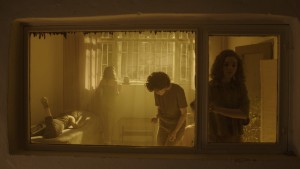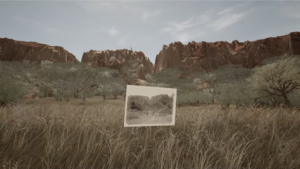Anton Kats
After Hope is an artistic research project at what was once the largest shipyard in the Soviet Union. Built by Soviet prisoners in 1951, the shipyard employed up to sixty thousand workers and produced twelve cargo ships a year at its peak. Since then, ships such as Freedom, Paris Commune, Yuri Gagarin or Leninskii Komsomol, which transported a Soviet rocket division to Nicaro, Cuba in 1962, have circulated internationally and remain immanent in the socio-economic and political making of the world. Since Ukraine’s independence in 1991, the shipyard has been repeatedly shaken by corruption scandals, privatisation and restructuring attempts, structural and economic collapses following the annexation of Crimea in 2014, occupation by the Russian military in 2022 and the ongoing war in Ukraine. The research trajectory of the project builds on the reflection, synthesis and methodological outcomes of the previous work based in Kherson, developed over the last seven years. Informed by the specificity of Satellite Island, the place of my birth and upbringing, the artistic and political urgency to deepen and synthesise the methodology of the existing works is dictated by the hardly comprehensible full-scale war in Ukraine, which underlines the necessity to engage in a long-term research project. The research trajectory builds on my works specific to this southern Ukrainian region, such as After Joy (Muziris Biennale, Kochin 2018), Four Before and After Five (ISCP, New York 2020), Vostok 7 (SAVVY Contemporary 2020), Cemetery of Melodies Alive (Steirischer Herbst 2023) and If Not Now, When? (House of World Cultures, 2023-2024).
Driven by the need to respond to the fractures of recent history, the continuing rise of fascism in Europe and the military invasion of Ukraine, the proposed research trajectory begins with the cargo ship Vishwa Asha – Universal Hope – built in Kherson during the Indo-Soviet partnership in 1973. While the current status of the Universal Hope is ‚decommissioned or lost‘, the research project seeks new possibilities to re-sound and re-imagine the world after hope as a world after war. After Hope marks a new chapter in the synthesis and development of my transdisciplinary practice, interweaving sound, music and performance with fine art, filmmaking and academic research. The proposed research trajectory expands on existing work by addressing the following subset of questions to be addressed through a two-year research project:
– How can transdisciplinary art practice respond to the full-scale military invasion in Ukraine?
– How is the response-ability of the artist shaped in a historically critical moment?
– How can the lessons of war be transformed into pedagogy?
Anton Kats (Kherson, Ukraine) works as an artist and musician. Anton’s practice draws from the everyday, inspired by the complex narratives of Satelite Island, a south-Ukrainian neighbourhood in the port city of Kherson. Kats develops responsive and site-specific projects exploring the interdependencies of learning, migration, and the non-normative. His works have been presented at Haus of World Cultures, steirischer herbst, SAVVY Contemporary, Serpentine Galleries and Tate Modern. Kats took part in documenta14 and performed at Roskilde Festival, Fusion Festival, and Sonic Acts. Kats was awarded a practice-based PhD at Goldsmiths University of London and currently lectures at MA Spatial Strategies at Kunsthochschule Weißensee.
www.antonkats.net / www.ilyich.net



